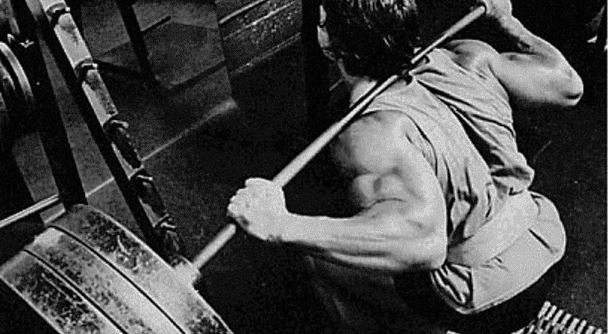Picking the Squat that’s Right for You


By Greg Nuckols
The common wisdom that every good program is built around squats could not be more true. The squat utilizes almost every muscle in your body, teaches you to use your muscle synergistically, and is the cornerstone for producing 26+ inch wheels that set the serious lifter apart from the casual gym-bro.
However, as evidenced by incessant questions and multitudes of form checks around the internet, as well as disgusting squats marring the racks of gyms across America, a lot of people simply don’t know how to squat. Sure, they know the basics: point your toes out a little, break parallel, don’t let your weight get on your toes. But beyond that, they have no idea how to troubleshoot the squat to maximize it for their leverages.
Before we press onward, I want to explain my criteria for the choices I made. The choices I made represent the squat style that will let the most people possible develop the primary muscles in the squat – the quads, hamstrings, glutes, and spinal erectors – as evenly as possible. That means that if a squat style will inequitably stress a particular muscle group, causing it to fatigue before the others get the desired training stimulus, it’s not the squat for you.
The anatomical variations we’ll be considering are extra long femurs, extra long torsos, degree of abduction at the hip (how well you can push your knees out), and ability of the ankles to dorsiflex (allowing the knee to track forward). The variables we’ll be considering for squat style are footwear, bar placement, and stance width. We’ll start with the most difficult cases, and work toward the easiest.
Let’s start with the long-femured trainee. Typically this is the guy who can deadlift a house, but whose squat lags a couple hundred pounds behind. If this is you, I’m sure you’ve experienced, time and again, that your biggest problem is pitching forward in the hole. To keep your weight over the middle of your foot, you have to lean waaaay over to counteract your long femurs. For you, your primary objective is picking a squat style that keeps you as upright as possible, decreasing that forward lean so your spinal erectors don’t always give out before your legs and hips.
For you, there are two options. If you can get good abduction at your hips (push your knees way out to the side), doing so “shortens” your femurs, giving you less distance you have to compensate for with forward lean. If this is you, flat soles, either a high or low bar position, and a moderate to wide stance will allow you to stay upright and engage your quads, hamstrings, and glutes in the movement better.
This is actually how I have to squat if I want to break parallel with a bunch of weight (and actually stand back up with it!):
If you can’t abduct at the hip that well, then your best bet is getting an Olympic shoe with a raised heel, sticking with high bar squats and a close to moderate stance width, and letting your knees track forward (still trying to keep your weight on your heel or at midfoot) to allow you to stay more upright with the aim of, again, countering the propensity of your spinal erectors to bear the brunt of the load. If you can dorsiflex well, Olympic shoes aren’t a necessity. If you have tight ankles, a shoe with a raised heel will help a lot with this technique.
Tom Platz demonstrates this form perfectly in one of the greatest feats of squatting ever accomplished:
If you’re a guy or gal with a more normal overall build, then the key to a good squat is more a matter of elbow grease, and less a matter of finding that one perfect form. A moderate stance squat with the knees tracking slightly forward and the knees flared as much as possible will do the trick – though the same degree of flare necessary for your long-femured counterparts isn’t a requirement for you. If your ankles are REALLY locked up, you may benefit from a shoe with a raised heel, but a flat sole will probably work just as well. High bar vs. low bar isn’t that huge of an issue for you either. In general I’d recommend low bar since you can use a smidge more weight, but rotating in some high bar squats to give your elbows and shoulders a break is a good idea as well.
Here’s a perfect example of Konstantin Pozdeev squatting 4x bodyweight raw (881 at 220) using this style:
And, just for good measure (and since long femur and long torso guys are getting two videos), here’s Ray Williams casually standing up with 905:
Finally, if you’re a guy with a long torso and short femurs, we hate you. Seriously. You’re built ideally to squat. Your hips can stay closer to your center of gravity through the whole lift, which means a greater mechanical advantage for moving weight.
If you have great abduction, we hate you even more (I’m joking obviously. Sort of). If you take a moderate stance with a flat sole and push your knees out, your range of motion is about 6 inches and you should eventually be able to squat heaven and earth.
Nobody in the game right now demonstrates this technique quite as well as Henry Thomason:
If your abduction isn’t that great, moving your stance in a smidge, putting on some weightlifting shoes and squatting high bar is your next best option. Actually, regardless of how you move the most weight, this would be my recommended training lift for you if you have short femurs and a long torso. Why? Because it will have the longest range of motion for you. Since you’re built so well to squat, optimizing the training effect should be just as high a priority for you as moving heavy weight.
Although, sadly, no one ever took video of his best squats, watch how Hossein Rezazedeh plays with 672 in this video:
The final question, obviously, is “how do I know which of these groups I fall into?” Well, the femur averages 26% of the body’s total height, so measure from your hip to the outside of your knee joint. Divide that number in inches or centimeters by your height in inches or centimeters. If you get .26 on the dot, then you’re average. If you get more than .26, you’re erring farther towards “long femured” and if you get less than .26, you’re erring farther towards “long torsoed.”
So, to wrap up, if you’re not squatting, get to it! If you are squatting, the recommendations in this article may be just what you need to add some more weight to the bar and improve the bang for your buck you’re getting with your squat training.
ABOUT THE AUTHOR

Greg Nuckols is a strength coach and world-class drug free powerlifter finishing a BS in Exercise and Sports Science. His specialties are breaking down movement and programming with the goal of individual optimization.
Website: http://www.gregnuckols.com
Facebook: https://www.facebook.com/gregory.nuckols
Twitter: https://twitter.com/GregNuckols
YouTube: http://www.youtube.com/user/gnuckols
